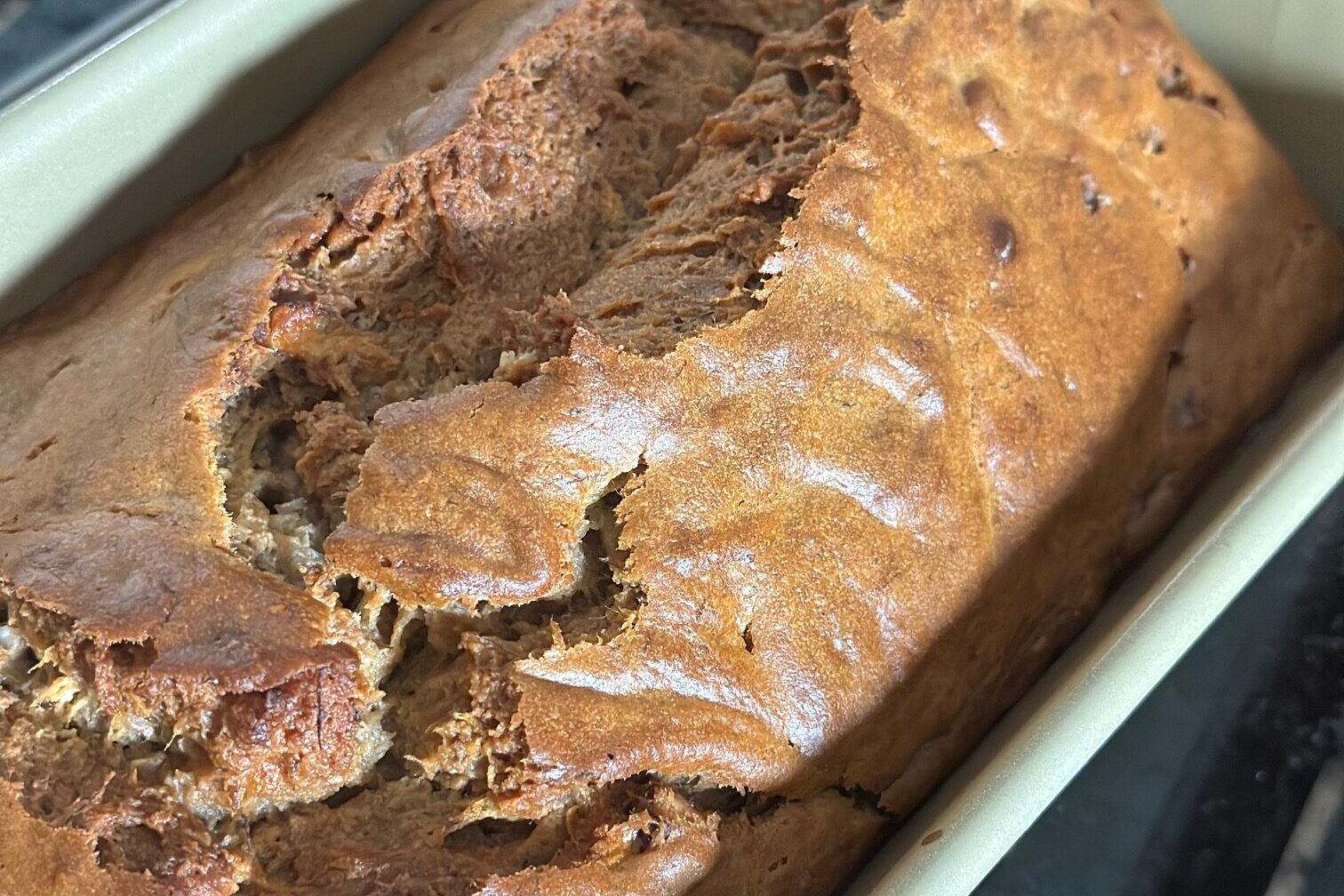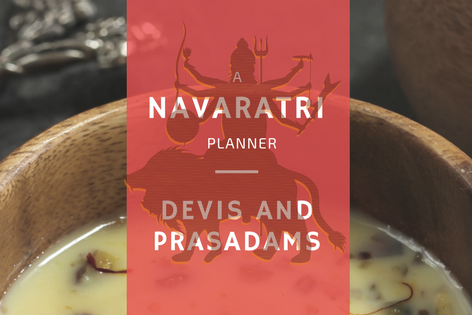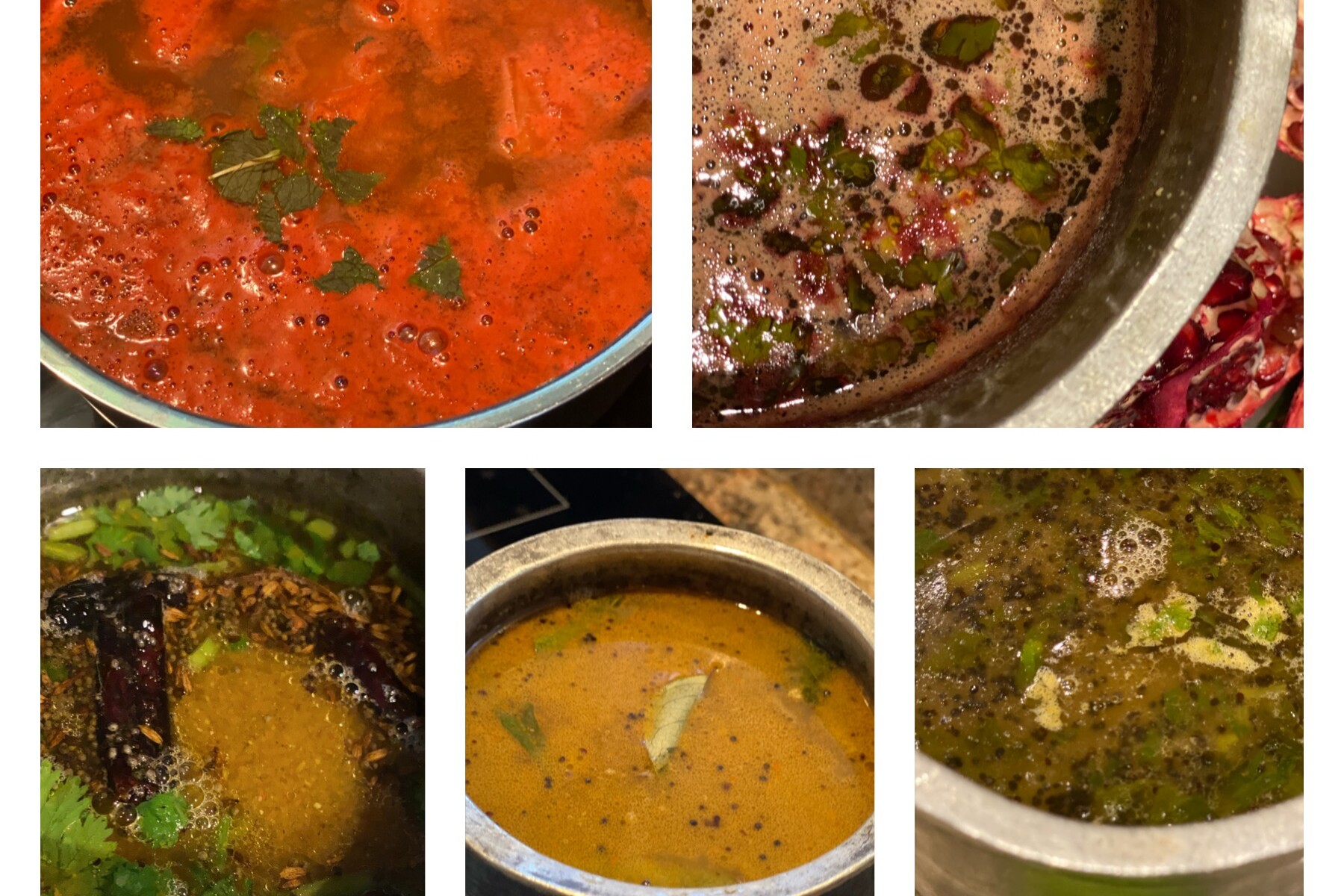Yes. I know this is quite an unusual title for something as commonplace as sambar, but I have a reason for naming this recipe the way I did. This is THE contribution from Anusuya’s kitchen. I will not be exaggerating when I say that this is her signature dish. Well, I had the good fortune of jotting down the recipe verbatim as told by her and also tried it not once, but twice, and the result was amazing. I say that because sambar has never been my forte, at least the way I have always made it, and this was not only easy but dosai-licking good! As you can tell, we had it with hot dosai and it was a hit! Here goes the recipe…
Ingredients:
Please note that this recipe is for a 2 quart container and should serve about 4 people.
Toor dal (yellow lentils) – 1/2 cup, pressure cooked till soft
Ghee – 1 tsp
Oil – 1 tsp
Shallots – 7-8 (peeled)
Saragawa (Murungakkai in Tamil also commonly known as “drumsticks”- not the chicken kind) – 7-8. I used frozen ones.
Tamarind paste – 2 tsp (You can also use a lemon size ball of fresh tamarind soaked in water to make a paste)
Sambar powder – 2 tsp (I used MTR Madras sambar powder. Make sure its the Madras kind and not the regular Sambar powder)
Tomatoes – 2, diced (You can also use half can of diced tomatoes for this.)
Cilantro – half bunch
Asafoetida – a pinch
Grind to a paste the following: 2 tbsp dhania seeds (coriander), 2-3 red chillies, 1/2 tsp methi seeds (fenugreek). Fry the above till the dhania starts to crackle. Add 2 tbsp of dessicated coconut. Medium fry all the above till you get a coconutt-y aroma. Now grind all the above in a blender. You can also use 2-3 tbsp of coconut milk while grinding to enhance the taste of the coconut.
For the sambar, heat the ghee and oil in a 2 quart vessel. Add mustard seeds. When it starts to crackle, add the onions and saragawa and fry well till cooked.
Add about 1 quart of water to this, add the tamarind paste, the sambar powder, cilantro, diced tomatoes. Add salt to taste and boil well till the raw smell of the sambar powder goes away. Add the boiled toor dal to this mixture and boil for a few more minutes. Now add the ground coconut/dhania paste to this and boil again for 5-10 minutes. The Sambar is ready!
A tip from Anusuya is to simmer the sambar in a crock pot on low for 1-2 hours to get the most out of its taste. I didn’t try this myself but can attest to the taste from having tried it at her home!
THE Sambar Version 2
Here’s another variation of the recipe from Anusuya which I have found to be equally good.
Ingredients:
Masoor dal (red lentils) – 1 cup
Sambar powder – 4 tbsp
Capsicum – 1 , chopped into medium sized pieces
Tamarind paste – 3 tsp
Canned diced tomatoes – 1
Cilantro, chopped – 1/2 cup
Curry leaves, chopped – 1/2 cup
For sambar powder – Coriander seeds – 4 tbsp, Desiccated coconut – 3 tbsp, Fenugreek – 1tsp, Dry red chilies – 5-6, Coconut milk – 1 tbsp.
For tadka or garnish – Mustard seeds – 2 tsp, Dry red chilies – 4-5, Asafetida – a pinch, Curry leaves – 5-6
Method:
1. Boil the masoor dal in about 1 1/2 quarts water (in a 4 quart saucepan)
2. When the dal is cooked, add the sambar powder.
3. Add the chopped vegetables to the water and dal mixture and let cook for about 5-7 minutes.
4. When the vegetables are more than half cooked, add 3 tsp tamarind paste and mix well.
5. Add the can of diced tomatoes.
6. Boil this mixture for about 7-10 minutes till the raw smell of the canned tomatoes goes away.
7. Add the chopped cilantro and curry leaves.
8. Meanwhile grind all the ingredients for the sambar powder. You can add the coconut milk to this while grinding so it becomes more of a paste consistency.
9. Add this ground paste to the sambar and boil for another 5-7 minutes
10. You can transfer this to a crock pot and continue to cook under low heat or in the “keep warm” mode.
11. Before serving, heat oil in a kadai, and add the ingredients for the tadka or popu. Pour the tadka over the sambar and mix well.






